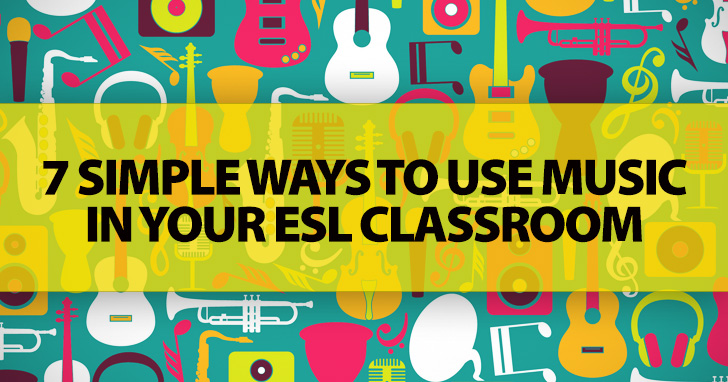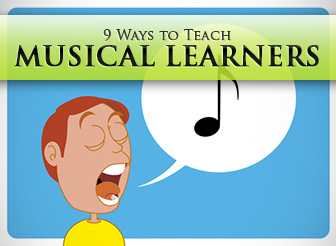Time to Tune In: 7 Simple Ways to Use Music in Your ESL Classroom


They tap rhythmically on the desk with their pencils. They love silly rhymes and chants. These learners don’t just like music, they connect to it on every level because they are musical/rhythmic learners.
Musical learners thrive in an environment where they can not only hear music, but also hear patterns and relationships between sounds. One of eight types of learning styles or intelligence, as defined by Howard Gardner, musical learners have the ability to process all kinds of auditory information.


Songs are what work best for musical learners, so don’t be afraid to give them plenty of those. Here are just a few things you can do with a song:
Use your imagination! There’s no limit to what you can do with a song!
Chants are very rhythmic and easy to remember – the ideal way to reach musical learners. Did you know you can teach almost anything with a chant? Here are just a few ideas:
When it comes to reading, it is best for musical learners to read out loud as they have the chance to hear the sounds and patterns the English words and structures make. You can try:
Musical learners are even more motivated when a certain beat is accompanied by movement. When you teach sentence or word stress, clap your hands once for each of the words/syllables, but emphasize the stressed word/syllable with a louder clap. Sing songs that you can also dance/move to like “Head, Shoulders, Knees and Toes”.
Use popular rhymes like Mother Goose Rhymes or books like Dr. Seuss’. They have a particular rhythm that is very attractive to musical learners. Play games with rhymes. Teach irregular verbs in rhymes. Ask musical learners to come up with words that rhyme! They will!
Musical learners are more stimulated to learn when they are surrounded by music. Feel free to play some music they can listen to while they read, write or draw. Just make sure you pick the right kind of music, perhaps Mozart or anything instrumental. Pop songs with lyrics they are familiar with will make them sing instead of help them focus on the task at hand.
Musical learners are very skilled listeners and are able to pick up on all sorts of information. Make good use of these skills by giving them authentic materials to listen to.
Sentence stress, word stress, rising or falling intonation…these are the types of things musical learners should have no trouble with as they have a good ear for picking up on the differences.
Their pronunciation may not be perfect, but musical learners are certainly better able to hear differences between vowel and consonant sounds. Capitalize on this skill and give them plenty of pronunciation practice – it won’t be wasted! They’re also very good at seeing patterns so they will easily pick on the spelling of some vowel and consonant sounds, as well as specific consonant combinations.

There are certain things that will not work well with musical learners. These are mainly:
Instead of fighting it, embrace it and bring some rhythm into your class. You might notice yourself humming a tune on your way home.